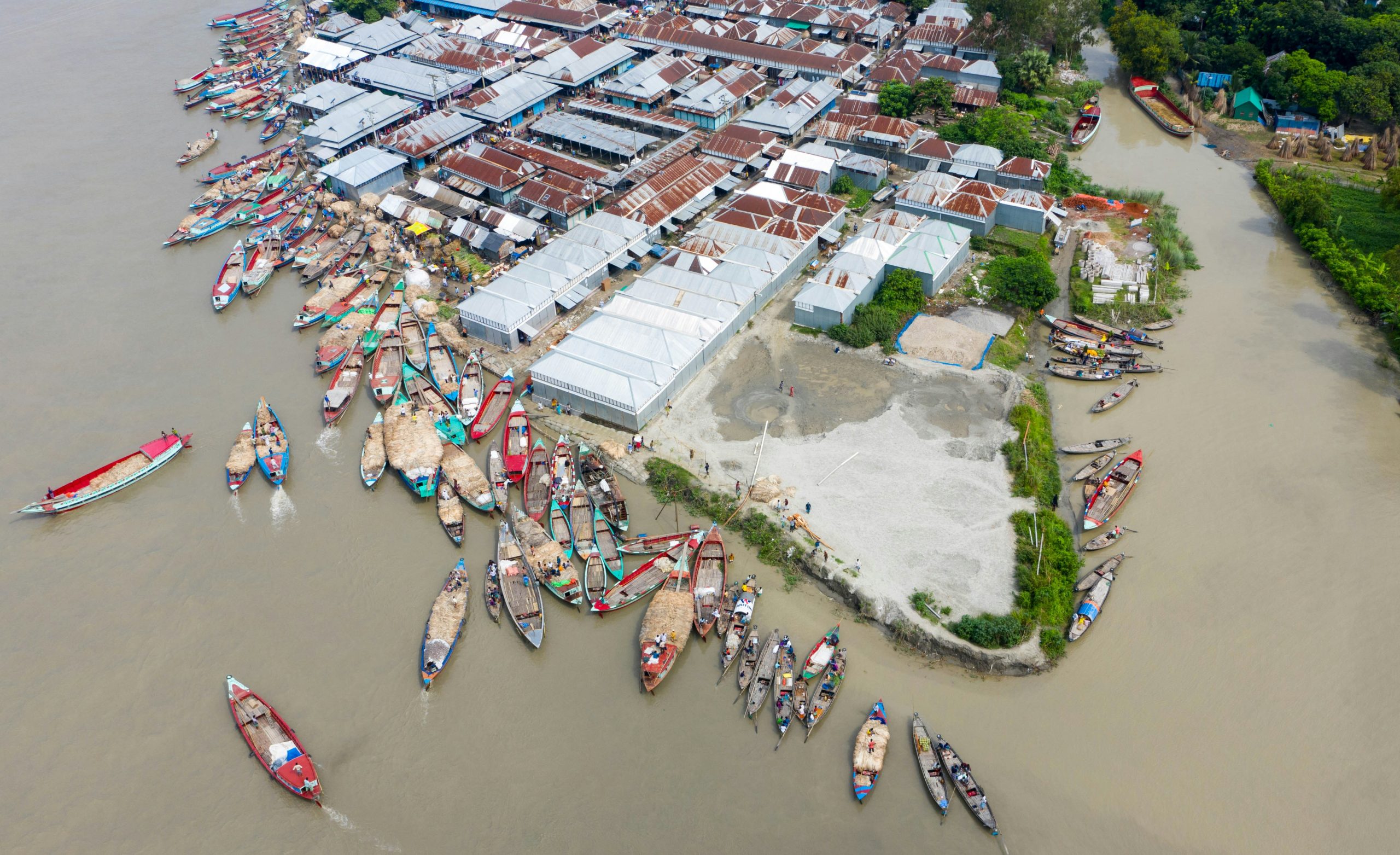
CHALLENGE
Bangladesh is highly vulnerable to climate impacts, with cyclones and floods disrupting lives and livelihoods every year. Despite government action, the capacity to manage compound disasters (multiple disasters at once) and cascading disasters (one triggering another) remains limited.
SOLUTION
Integrating disaster risk reduction (DRR) with climate change adaptation (CCA) offers a way to address these interconnected risks more effectively and build resilience.
Overview
Since 2022, AP-PLAT has implemented a capacity-building program in Bangladesh to strengthen responses to compound and cascading disasters. The program began with a focus on disaster risk reduction and, in 2023, expanded to integrate climate change adaptation, reflecting international priorities under the Sendai Framework and the Paris Agreement. Two workshops in 2023 explored how merging DRR’s immediate risk management with CCA’s long-term strategies can help communities anticipate, respond to, and recover from disasters. This integrated approach fosters resilience, reduces vulnerabilities, and supports sustainable development in one of the world’s most climate-vulnerable countries.
Details
Two capacity-building workshops were conducted in Bangladesh in 2023 to deepen understanding and build capacity for compound and cascading disaster reduction (CCDR). These workshops were pivotal in advancing stakeholder knowledge, fostering collaboration, and developing actionable solutions tailored to the country’s vulnerability to complex disaster scenarios.
First workshop (January 2023)
The first workshop in Dhaka engaged 50 participants, including government officials, NGO representatives, academics, and university students. It was the initial phase of a participatory process designed to introduce CCDR concepts and explore their implications within the context of Bangladesh. The workshop began by introducing CCDR as a novel framework to address interconnected disaster risks. Participants explored case studies, such as Cyclone Amphan, which combined natural disasters with challenges like COVID-19 and the Sitakunda fire, illustrating industrial hazards cascading into broader impacts.
Participants engaged in group discussions centered around four thematic areas:
- Historical CCDR events: Identifying critical disasters in the past 15–20 years that demonstrated compound or cascading characteristics.
- Capacity needs: Determining the essential skills and infrastructure required to mitigate CCDRs effectively.
- Integrating CCDR with climate change adaptation: Exploring the synergy between DRR and CCA from policy and practical perspectives.
-
Intervention strategies: Proposing specific actions to bolster CCDR resilience, including public awareness campaigns, enhanced early warning systems, and leveraging AI and IoT technologies.
Outcomes included a typology of CCDRs relevant to Bangladesh, categorising risks into combinations of natural disasters (e.g., floods and cyclones), natural-biological disasters (e.g., dengue outbreaks during floods), and industrial disasters (e.g., chemical explosions). The workshop also highlighted the necessity of addressing CCDRs at both national and local levels through dynamic hazard mapping and by strengthening local disaster response committees.
Second workshop (2024)
The second workshop aimed to translate the foundational understanding from the first workshop into practical project proposals. It featured collaborative project design exercises, emphasizing the integration of CCDR with broader resilience-building efforts. Participants were divided into groups, each tasked with developing solutions that aligned with the theory of integrating CCA and DRR.
Key projects developed
-
National-level climate-smart data systems
Aimed at establishing a harmonized data generation and management system to support CCDR response and decision-making.
Proposed interagency coordination and creation of a centralized data center to consolidate climate and disaster information for improved early warning and post-disaster management.
-
Local-level coastal resilience initiatives
Focused on the most vulnerable communities in Bangladesh’s coastal regions.
Proposed ecosystem-based solutions, infrastructure development, and tailored early warning systems to mitigate CCDR impacts on livelihoods, agriculture, and health.
Key insights and recommendations
- Capacity-building needs: Effective CCDR management requires tailored training, public education campaigns, and formal curriculum integration to foster widespread understanding.
- Stakeholder engagement: Multi-level collaboration, from grassroots organizations to national policymakers, ensures a comprehensive response.
- Innovation and technology: Leveraging advanced technologies like AI and IoT can revolutionize hazard mapping and early warning systems.
-
Policy integration: Establishing frameworks integrating CCA and DRR at the policy and implementation levels ensures sustained resilience against CCDR.
The two workshops highlighted the importance of participatory approaches in building CCDR capacity and advancing understanding from conceptual frameworks to actionable solutions. They reinforced the need to integrate disaster management with climate adaptation, equipping stakeholders with the tools to navigate the complex landscape of risks in Bangladesh effectively. Through these efforts, participants gained practical insights, paving the way for robust, climate-resilient strategies to address CCDRs.
Related Information
This article is based on the working document (Kurushima et al., forthcoming) “Capacity-building on Compound and Cascading Disaster Risks in Bangladesh through Participatory Approach”IPCC. (2022). Climate Change 2022: Impacts, Adaptation, and Vulnerability. Contribution of Working Group II to the Sixth Assessment Report of the Intergovernmental Panel on Climate Change [H.-O. Pörtner, D.C. Roberts, M. Tignor, E.S. Poloczanska, K. Mintenbeck, A. Alegría, M. Craig, S. Langsdorf, S. Löschke, V. Möller, A. Okem, B. Rama (eds.)]. Cambridge University Press. Cambridge University Press, Cambridge, UK and New York, NY, USA, p. 3056
Project details: AOA2022-01MY-Shivakoti, Regional partnership for localisation of NDC through community-led “local adaptation innovation hubs” in the Asia-Pacific region